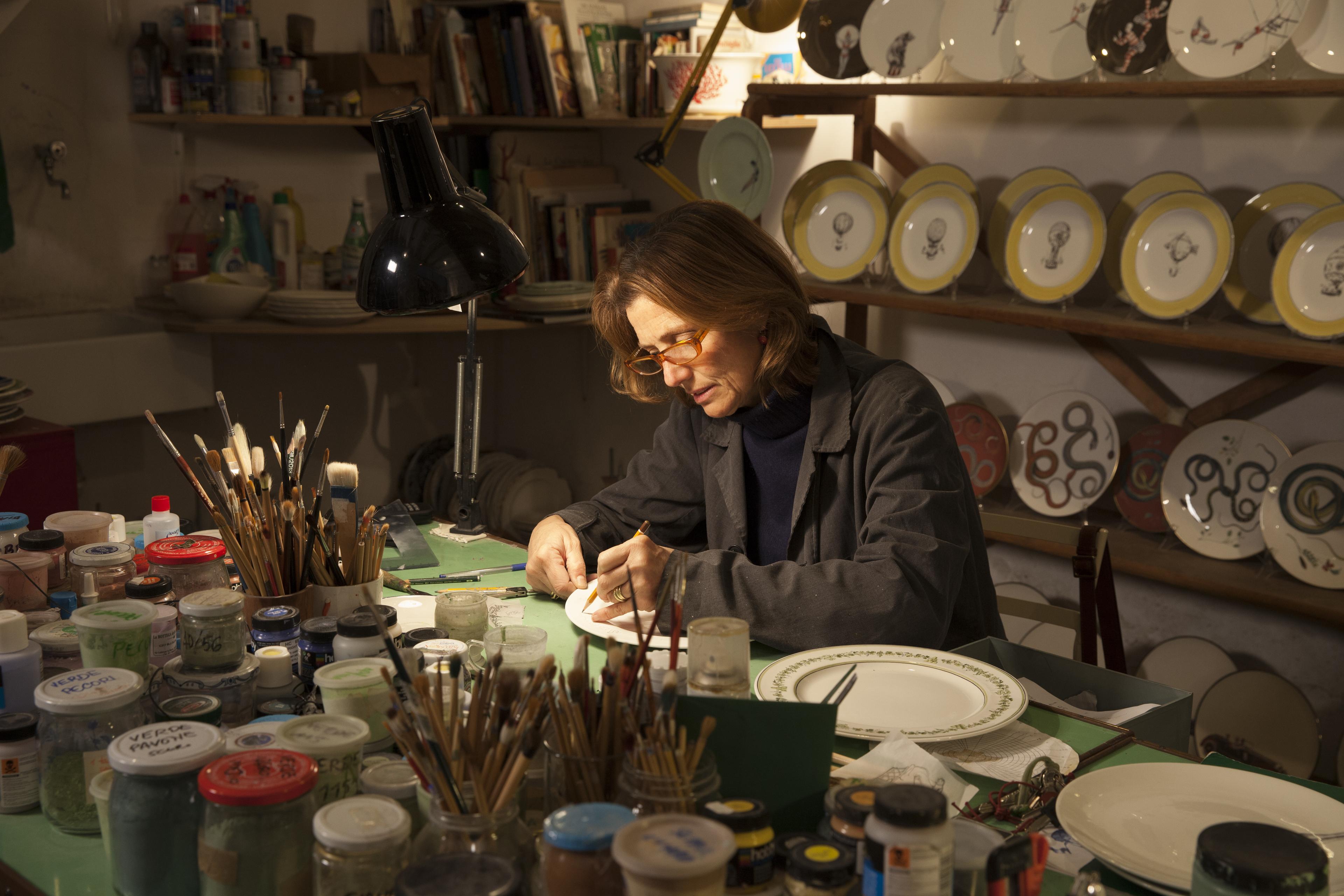
Portavelas de cerámica Levante
340 EUR
Envío en 1 semana

Bottega d'Arte Gatti Ceramica se enorgullece de su búsqueda permanente de técnicas y diseños innovadores, demostrada por una espléndida colección. Cuando Riccardo Gatti la fundó en 1928, ya era un ceramista célebre en Faenza, por su hábil mano. Pero su talento fue reconocido también a nivel nacional, ya que expuso en importantes establecimientos como la Trienal de Milán, el Museo de Cerámica de Faenza y la Bienal de Venecia.
El contenido de esta página ha sido traducido automáticamente. Visitar el sitio en ingles
¿Cómo empezó la empresa? Cuéntenos la historia de su empresa.
La empresa fue fundada por nuestro tío abuelo Riccardo Gatti, pintor, escultor y ceramista que estudió en la escuela local de artes y oficios de Faenza y posteriormente asistió a la Accademia delle Belle Arti de Florencia. Comenzó su carrera como ceramista en el taller de los hermanos Minardi, para pasar después a trabajar como pintor ceramista, primero en la fábrica Farina y más tarde en Faventia Arts, todas ellas empresas que han marcado la historia de la artesanía de finales del siglo XIX. En 1928 decidió emprender su propio negocio y abrió una fábrica, cuyo edificio original sigue en pie hoy en día. El apoyo de los seguidores del movimiento futurista italiano, así como los reconocimientos en exposiciones, muestras de arte y ferias, no tardaron en llegar. Nuestro tío dirigió la empresa hasta su muerte en 1972. Su nieto, Dante Servadei, recibió entonces el encargo de dirigirla, trabajando incansablemente para preservar su misión de vincular los objetos artesanales a la tradición de la tierra. Dante sigue dirigiendo fielmente la empresa junto a su hijo Davide, que ha contribuido a estrechar las relaciones con artistas y diseñadores, y sus dos hijas: Marta, que se encarga del marketing, y Laura, que supervisa la contabilidad y la administración.
¿Cuál es el secreto del éxito de una empresa familiar?
Todo empresario ve a su empresa como a su hijo: es algo precioso que hay que cuidar y a lo que hay que prestar atención. Despreocupado por las largas horas dedicadas a hacerla funcionar, piensa constantemente en cómo mejorar y modernizar sus productos, en cómo crear nuevas oportunidades de mercado para potenciar la vitalidad de un mundo en continua evolución. La implicación de la familia en la gestión diaria de la empresa y la historia familiar también son especiales porque infunden un sentimiento de orgullo y responsabilidad en quienes un día tomarán el relevo. Hoy en día se crean demasiadas empresas y desaparecen dejando tras de sí problemas para los que vengan después. Somos conscientes de que no podemos permitirnos ningún error, porque la carga recaerá sobre los hombros de nuestros hijos o nietos.
¿Cómo influye su tierra en su trabajo?
Somos muy afortunados por ser ceramistas de Faenza, como lo son los sopladores de vidrio de Murano o los artesanos del alabastro de Volterra. En nuestro territorio se produce cerámica desde el siglo XIII. En el siglo XVI, muchos miembros de la realeza encargaban sus vajillas a Faenza, un lugar cuyo nombre en aquella época ya era sinónimo de cerámica fina. En Francia, por ejemplo, la palabra "cerámica" se traduce como "loza". Sentimos una gran responsabilidad porque nuestra región siempre ha producido piezas de gusto contemporáneo. Del mismo modo, hoy en día estamos al día de los productos; de hecho, Internet y la conectividad global han hecho que cambien muy rápidamente. En el pasado, estilos como el Art Nouveau y el Art Déco se desarrollaban a lo largo de muchos años, mientras que hoy las "tendencias" duran sólo una temporada. Mantenemos los pies en el suelo en dos puntos fundamentales: la calidad de nuestros productos y su modernización estilística, elementos ambos influidos por una región que tiene características muy específicas. Al igual que nuestra cocina local, nuestra fabricación se centra en productos y técnicas tradicionales.
Ceramica Gatti siempre se ha distinguido por elaborar sus productos cerámicos a mano durante todo el ciclo de producción. ¿Puede explicarnos con más detalle cuál es la parte más fascinante de este proceso? Teniendo en cuenta la influencia renacentista, ¿qué importancia tienen para usted y la empresa la innovación y la contemporaneidad?
Todo el ciclo de producción de un objeto es siempre fascinante, especialmente cuando sigue reglas específicas y técnicas centenarias para alcanzar un resultado deseado. No es cierto que hoy nuestras manos no sean tan buenas como las de nuestros antepasados: hoy somos capaces de crear objetos cuya forma y estética habrían sido impensables hace sólo unos años. Esto se debe a que, además de las habilidades manuales, contamos con la ayuda de tecnologías y materiales que nos permiten "atrevernos" a imaginar, y hacer, más cosas. La creatividad también ha ampliado nuestros horizontes desde que empezamos a fabricar piezas en colaboración con artistas y diseñadores de todo el mundo. No cabe duda de que nuestros productos se han visto influidos por estas colaboraciones. De hecho, se podría decir que ha habido una simbiosis entre la libertad de expresión de estos artistas y nuestros productos. Innovación y contemporaneidad son una misma cosa. Nuestro conocimiento de los estilos renacentistas y nuestra capacidad para reproducirlos es esencial para nuestro trabajo, no por la cansina repetición de los motivos, sino más bien porque cada toque y cada pincelada contienen la maestría del pasado, aunque tengan un sabor moderno.

505 EUR
Envío en 1 semana

405 EUR
Envío en 1 semana

770 EUR
Envío en 1 semana

680 EUR
Envío en 1 semana

400 EUR
Envío en 1 semana

340 EUR
Envío en 1 semana

340 EUR
Envío en 1-2 semanas

Arraigado en la centenaria artesanía italiana, pero impulsado por la experimentación constante, el…

Nacida de la pasión de la familia Sali por los tejidos finos a finales de la década de 1950, Bianc…